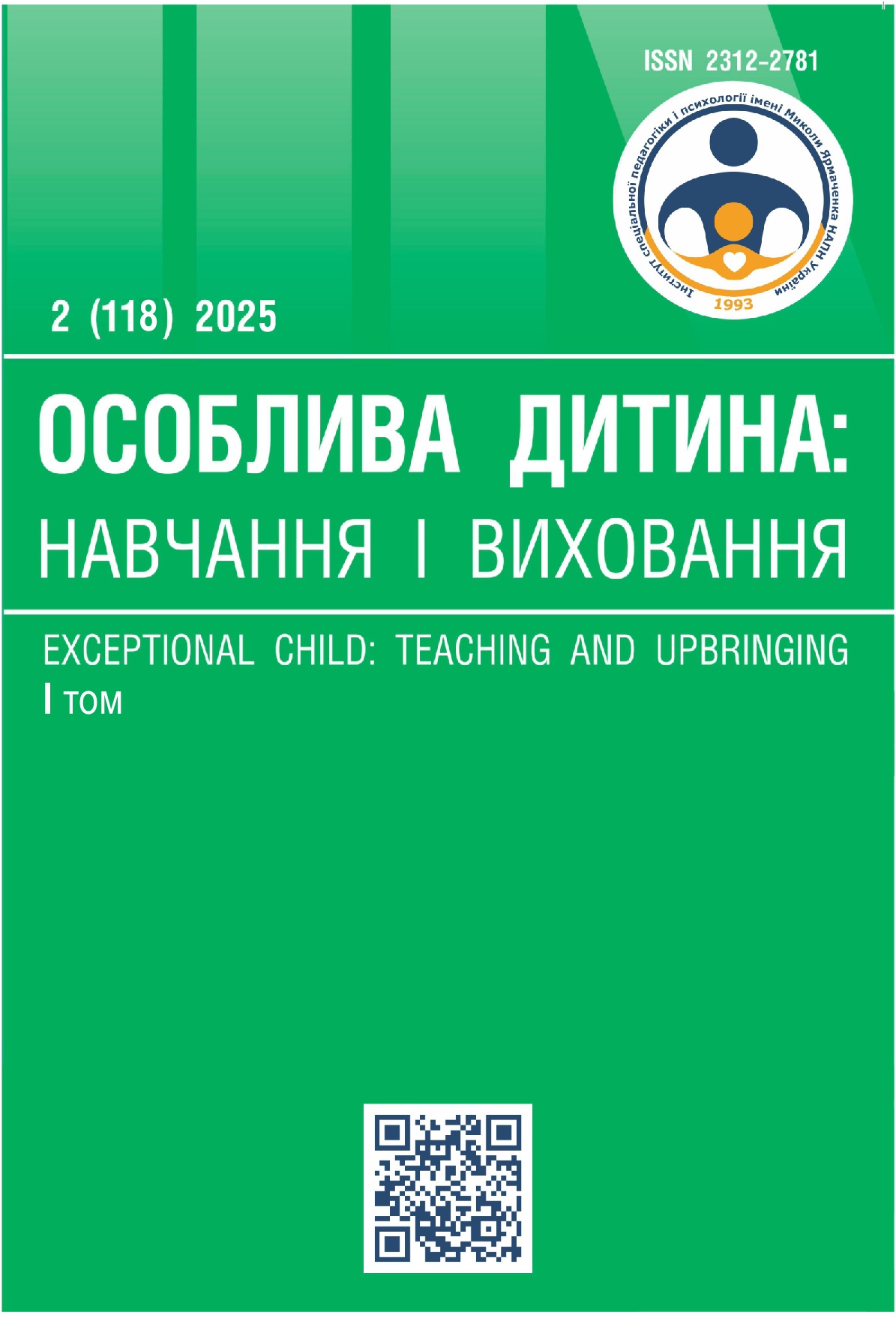DIAGNOSTICS AND CORRECTION OF MALADAPTIVE BEHAVIOR IN PRIMARY SCHOOL CHILDREN WITH INTELLECTUAL DEVELOPMENTAL DISABILITIES IN AN INCLUSIVE EDUCATIONAL ENVIRONMENT
Abstract
This research is dedicated to the topical problem of studying the level of aggressive behavior in primary school children with intellectual disabilities who are studying in inclusive educational settings. The aim of the article is to determine the level of aggressive behavior in primary school children with intellectual disabilities who are studying in inclusive classes. In the process of the research, a complex of methods aimed at assessing the emotional and behavioral sphere of children was applied. The obtained data include quantitative indicators of various forms of aggression, qualitative characteristics of aggressive tendencies, recorded manifestations of behavior in the educational environment, as well as indirect indicators of emotional state. The article emphasizes the heterogeneity of the manifestations of aggressive behavior among children with intellectual disabilities in inclusive settings. Quantitative and qualitative characteristics of aggressive tendencies are determined, which is important for understanding the specifics of their maladaptive behavior. The obtained results indicate the heterogeneity of the emotional and behavioral sphere of the studied group. A significant part of the students demonstrates a moderate level of aggression, however, a statistically significant number of children with high rates of physical, verbal aggression, anger, and hostility were identified. The projective analysis of drawings revealed a high frequency of aggressive and anxious images, indicating the presence of internal emotional tension. Behavioral observation recorded the prevalence of impulsivity and oppositional behavior. The presence of a correlation between anxiety and aggression in the emotional state of the studied children was also confirmed. The research findings underscore the importance of a comprehensive diagnostic approach to assessing the emotional and behavioral sphere of students with intellectual disabilities in an inclusive environment. The identified features of aggressive and anxious manifestations provide a basis for the development of individualized programs for the correction and prevention of destructive behavior, aimed at teaching strategies of self-control, emotional regulation, and socially acceptable ways of interaction.
References
Особлива дитина: навчання і виховання. №2(118). 2025. с.213-233


